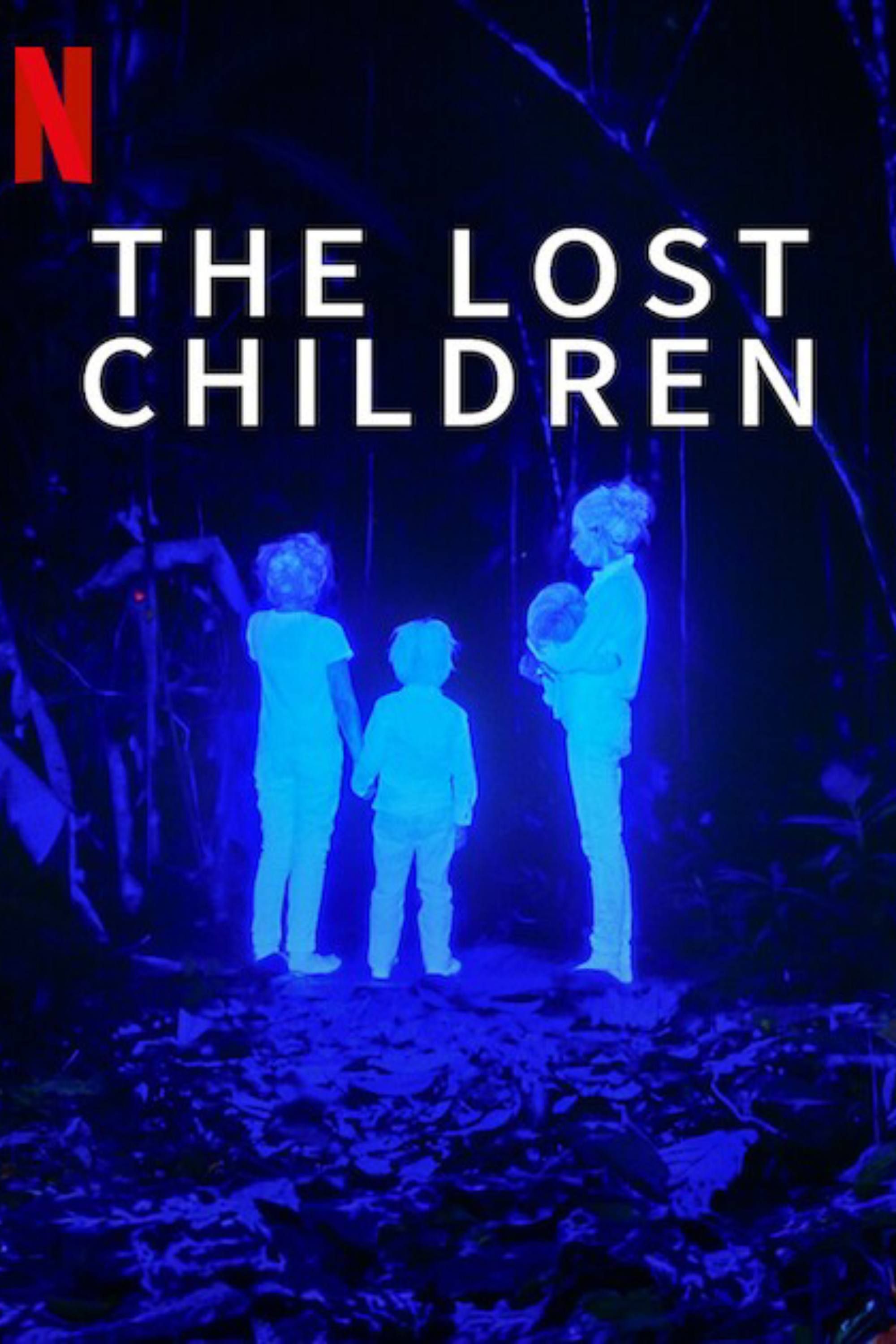Imagine a world where stories of missing children don’t just end with a poster on a milk carton. The question “where are the lost children now?” is one that haunts many, but it also invites us to dig deeper into the lives of those who were once lost. This isn’t just about solving mysteries; it’s about reconnecting, healing, and finding closure. So, buckle up, because we’re diving into the lives of these once-lost kids, shedding light on their journeys and where they stand today.
Now, picture this: A child goes missing, and the world holds its breath. The media buzzes, the community searches, and families grieve. But what happens next? Do they remain forever lost, or do some of them find their way back? That’s the question we’re here to explore. The keyword here is “where are the lost children now,” and trust me, the answers are as diverse as the stories themselves.
This article isn’t just about rehashing old news. It’s about uncovering the truth, understanding the challenges faced by these kids, and learning from their experiences. Whether it’s through reunions with families, adapting to new lives, or overcoming trauma, the stories of these lost children are both heart-wrenching and inspiring. So, let’s dive in and find out where they are now.
Read also:Dylan Redwine Body Found The Tragic Truth Behind The Headlines
Understanding the Scope: What Defines a Lost Child?
Before we dive headfirst into the stories, let’s break down what exactly we mean by “lost children.” Are we talking about kids who wander off in malls or those abducted and never seen again? The term “lost child” covers a broad spectrum, from kids who were abducted to those who got separated from their families during war or natural disasters. Each case is unique, but the pain and uncertainty they bring are universal.
According to the National Center for Missing & Exploited Children (NCMEC), over 400,000 children go missing each year in the United States alone. That’s a staggering number, and it’s just the tip of the iceberg. Globally, the numbers are even higher, with many cases never making it to the headlines. So, when we ask, “Where are the lost children now?” we’re not just asking about a few high-profile cases; we’re asking about hundreds of thousands of lives.
Biographies of Some Notable Lost Children
Case Study: The Story of Charles Lindbergh Jr.
One of the most infamous cases of a lost child is that of Charles Lindbergh Jr., the son of the famous aviator Charles Lindbergh. In 1932, the toddler was abducted from his family home, sparking a nationwide manhunt. The case captured the world’s attention, but the story didn’t end with the arrest of Bruno Hauptmann. The real question is, what happened to the child? Was he really the one found dead, or could there be more to the story?
| Name | Charles Lindbergh Jr. |
|---|---|
| Date of Birth | June 22, 1930 |
| Date Missing | March 1, 1932 |
| Current Status | Deceased (officially) |
Where Are the Lost Children Now? Exploring Reunion Stories
Reuniting Families: The Power of DNA Testing
Technology has played a massive role in answering the question, “Where are the lost children now?” DNA testing, in particular, has been a game-changer. Take the case of Kamiyah Mobley, who was abducted as a baby in 1998. For years, her family had no idea where she was, but thanks to a tip-off and DNA testing, Kamiyah was reunited with her biological family in 2017. Her story is a testament to the power of persistence and modern science.
- Kamiyah Mobley was abducted at just 11 days old.
- She was raised by a woman who claimed to have adopted her legally.
- DNA testing confirmed her identity, leading to a joyous reunion with her family.
The Role of Social Media in Finding Lost Children
Hashtags and Hope: How Social Media Helps
In today’s digital age, social media has become a powerful tool in the search for lost children. Platforms like Facebook, Twitter, and Instagram have been instrumental in spreading awareness and gathering information. Hashtags like #FindOurChildren and #BringThemHome have trended globally, bringing attention to cases that might otherwise have been forgotten.
For instance, the case of Hana Williams, who went missing in 2011, gained widespread attention through social media. While her case ended tragically, the outpouring of support and the global search for her highlighted the potential of social media in such situations.
Read also:Nikki Glaser Plastic Surgery Journey The Ultimate Guide To Her Transformation
Challenges Faced by Reunited Children
Adapting to New Lives: The Emotional Toll
Reuniting with family isn’t always a smooth process. Many children who were lost for years struggle to adapt to their new lives. They may face challenges such as identity issues, trauma, and even rejection. Take the case of Maria Bruder, who was abducted in 1984 and found in 2015. While she was reunited with her family, adjusting to life with them was far from easy.
- Maria had to relearn her native language.
- She struggled with trust issues after years of living in fear.
- Counseling and therapy played a crucial role in her healing process.
The Psychological Impact of Being Lost
Trauma and Resilience: Understanding the Mental Health Aspect
The psychological impact of being lost can last a lifetime. Children who experience trauma at a young age often carry those scars into adulthood. Studies have shown that early childhood trauma can lead to issues such as anxiety, depression, and post-traumatic stress disorder (PTSD). However, many of these individuals also exhibit remarkable resilience, finding ways to rebuild their lives despite the odds.
For example, Jaycee Dugard, who was abducted at the age of 11 and held captive for 18 years, has become an advocate for child safety. Her book, “A Stolen Life,” details her harrowing experiences and her journey toward healing.
Global Efforts to Locate Lost Children
International Cooperation: Working Together to Find Them
The search for lost children isn’t limited to one country. International cooperation plays a vital role in tracking down missing kids. Organizations like INTERPOL and the International Centre for Missing & Exploited Children (ICMEC) work tirelessly to bring children home. Their efforts have led to numerous successful reunions, proving that collaboration is key.
In 2020, INTERPOL launched a global campaign called “Operation Infancy,” which resulted in the identification of over 100 missing children worldwide. This initiative highlights the importance of a coordinated global response to the issue of missing children.
Technological Advancements in Finding Lost Children
From Milk Cartons to Facial Recognition: How Tech is Changing the Game
Gone are the days of relying solely on milk cartons to spread awareness about missing children. Today, technology has advanced to the point where facial recognition software and artificial intelligence are being used to identify lost kids. For example, Google’s facial recognition technology has been instrumental in identifying missing children in India, where thousands of kids go missing each year.
In one remarkable case, a boy who had been missing for over 25 years was reunited with his family thanks to facial recognition technology. The system matched his current face with a childhood photo, proving that technology can bridge the gap of time and distance.
The Future of Finding Lost Children
Innovations and Predictions: What’s Next?
As technology continues to evolve, so too will the methods used to find lost children. Experts predict that blockchain technology could be used to create a global database of missing children, making it easier to track and locate them. Additionally, advancements in AI and machine learning could lead to more accurate predictions of where a missing child might be found.
While these innovations offer hope, they also raise ethical questions about privacy and data security. Striking a balance between using technology for good and respecting individual rights will be crucial in the years to come.
Conclusion: Where Are the Lost Children Now?
So, where are the lost children now? The answer isn’t always clear-cut, but one thing is certain: their stories continue to evolve. From heartwarming reunions to ongoing searches, the journey of a lost child is never truly over. By understanding the challenges they face and supporting the efforts to find them, we can make a difference in their lives.
I urge you to share this article, spread awareness, and support organizations working to bring lost children home. Together, we can ensure that no child is ever truly lost. Let’s keep asking the question, “Where are the lost children now?” because every child deserves to be found.
Table of Contents
- Understanding the Scope: What Defines a Lost Child?
- Biographies of Some Notable Lost Children
- Where Are the Lost Children Now? Exploring Reunion Stories
- The Role of Social Media in Finding Lost Children
- Challenges Faced by Reunited Children
- The Psychological Impact of Being Lost
- Global Efforts to Locate Lost Children
- Technological Advancements in Finding Lost Children
- The Future of Finding Lost Children
- Conclusion: Where Are the Lost Children Now?


